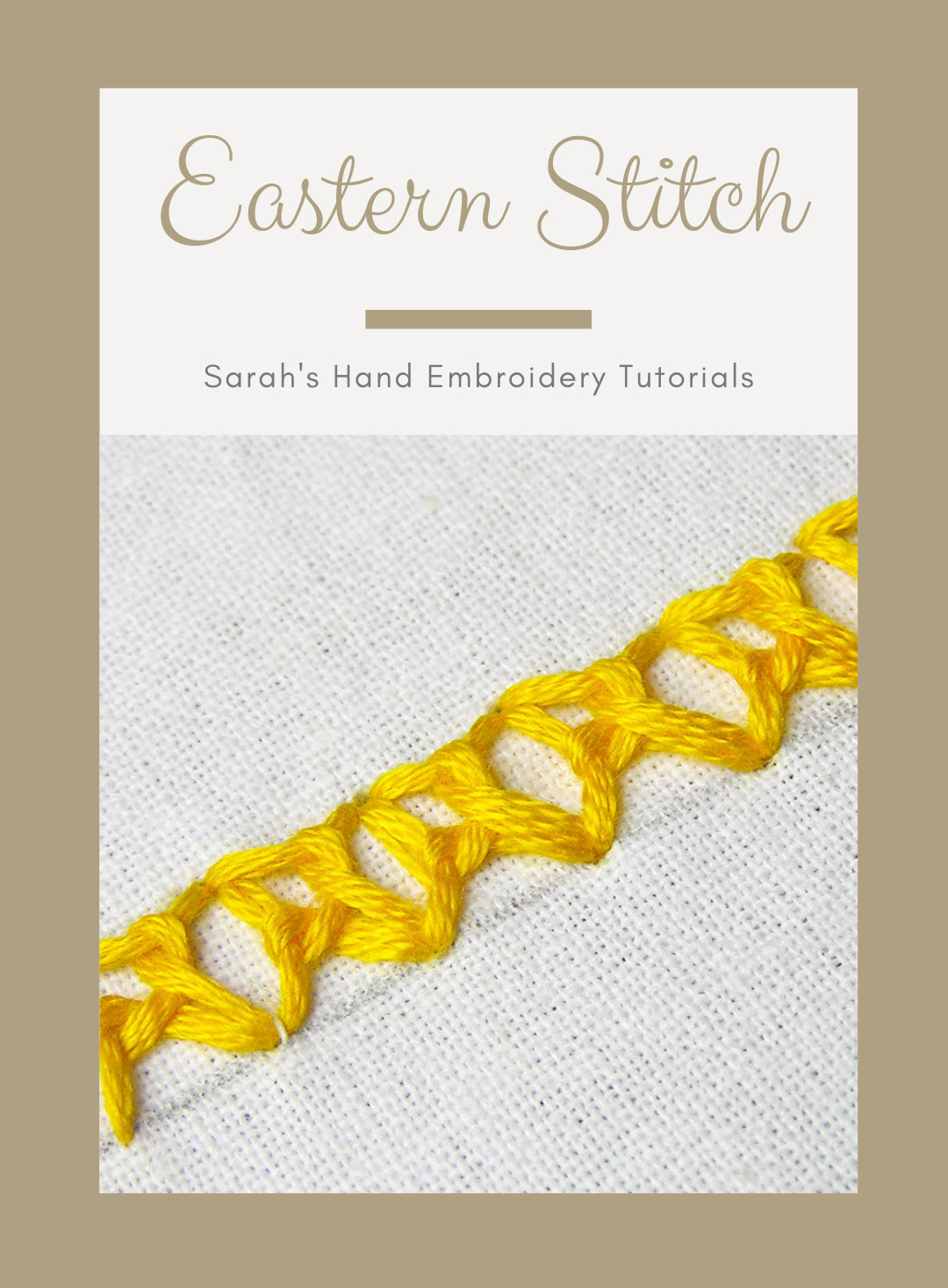
About the Eastern Stitch
The eastern stitch is interesting and can add texture to the work area. An interesting variation is when you can include a bead to it. If worked on even weave cloth, it can be used a filling stitch too. Here, I will illustrate the simple stitch technique of this stitch. It resembles the Sorbello stitch, which is the reason why I listed this under the Palestrina family of stitches.
How to do the Eastern Stitch
This stitch works from left to right. I will work between two parallel stitch lines.
 |
 |
| Fig 1: Start by stitching A-B. Come out from C, go in through A again, and then out from D. | Fig 2: Pass the needle under C-A without plucking the fabric underneath. |
 |
 |
| Fig 3: Now, pass the needle under A-B without plucking the fabric underneath. | Fig 4: Pull the needle out, and you will see a lovely pattern emerge. Take the needle in through D to finish off the stitch. |
 |
 |
| Fig 5: A single stitch looks like this. You can make individual stitches like this with spaces or scattered about. | Fig 6: You can also make a row of closely made Eastern Stitches, as shown. Just keep the stitch points B and D of the previous stitch connected to A and C of the next stitch. |
Learn to do Eastern Stitch in 2 minutes!
Related Stitches in the Palestrina Stitch Family
|
Mountmellick
|
Eastern Stitch
|
Learn this stitch and 305 other stitches from our 600-page eBook.
![Double knot stitch, Tied coral stitch, Old English knot stitch, Twilling stitch, Purl stitch [EN], Punto de Palestrina [ES], Point de Palestrina [FR], Palestrinastich [DE], Punto Palestrina [IT], Ponto de Palestrina [PT](https://www.embroidery.rocksea.org/images/embroidery/palestrina_knot_index_2.jpg)
![Punto de Sorbello [ES], Point de Sorbello [FR], Sorbello-Knoten [DE], Punto Sorbello [IT], Ponto Sorbello [PT]](https://www.embroidery.rocksea.org/images/embroidery/sorbello_index_2.jpg)
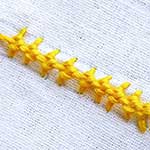






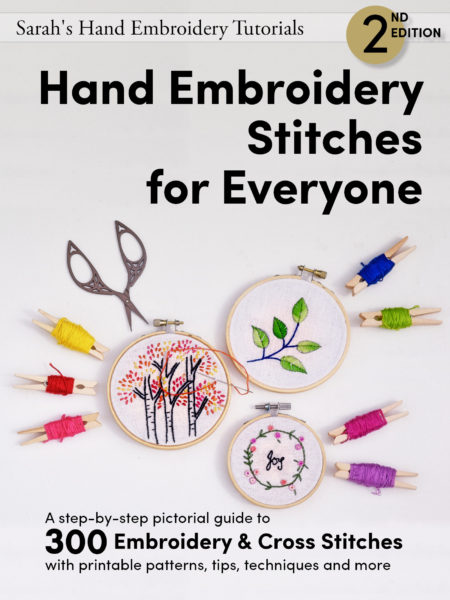
 Sarah has been researching and sharing hand embroidery lessons for over 17 years, making it accessible to everyone around the globe.
Sarah has been researching and sharing hand embroidery lessons for over 17 years, making it accessible to everyone around the globe.
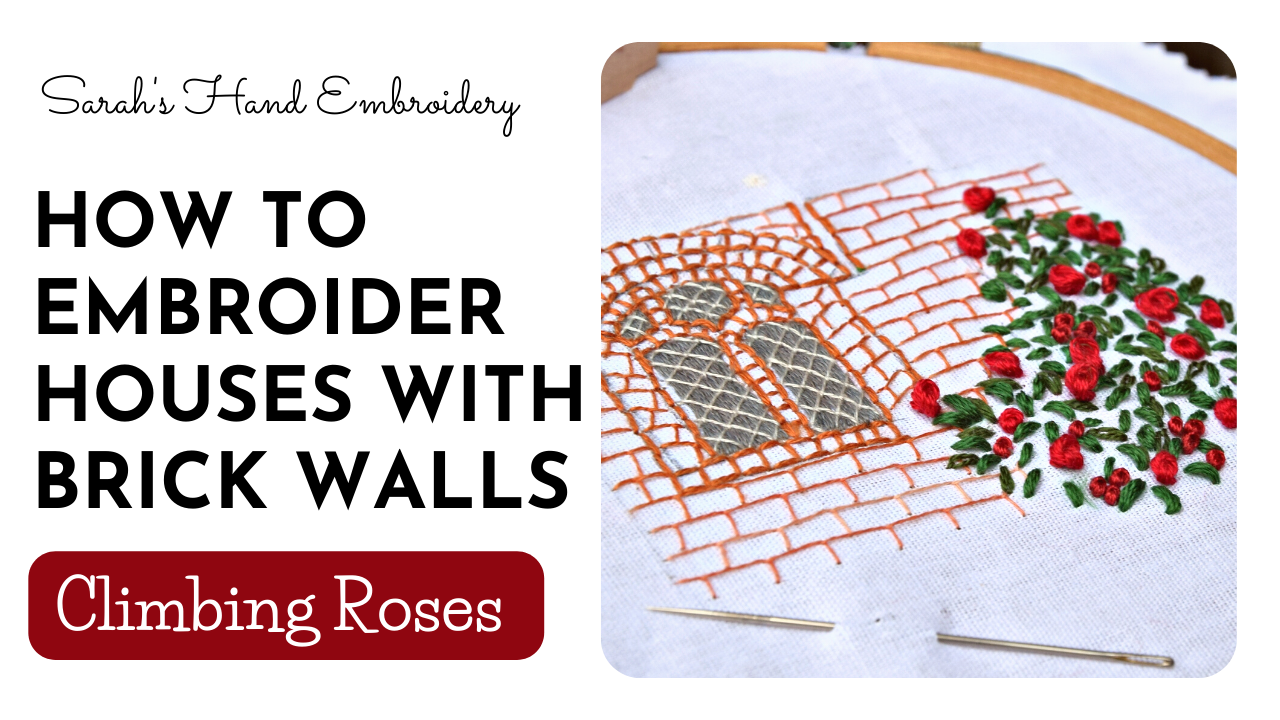
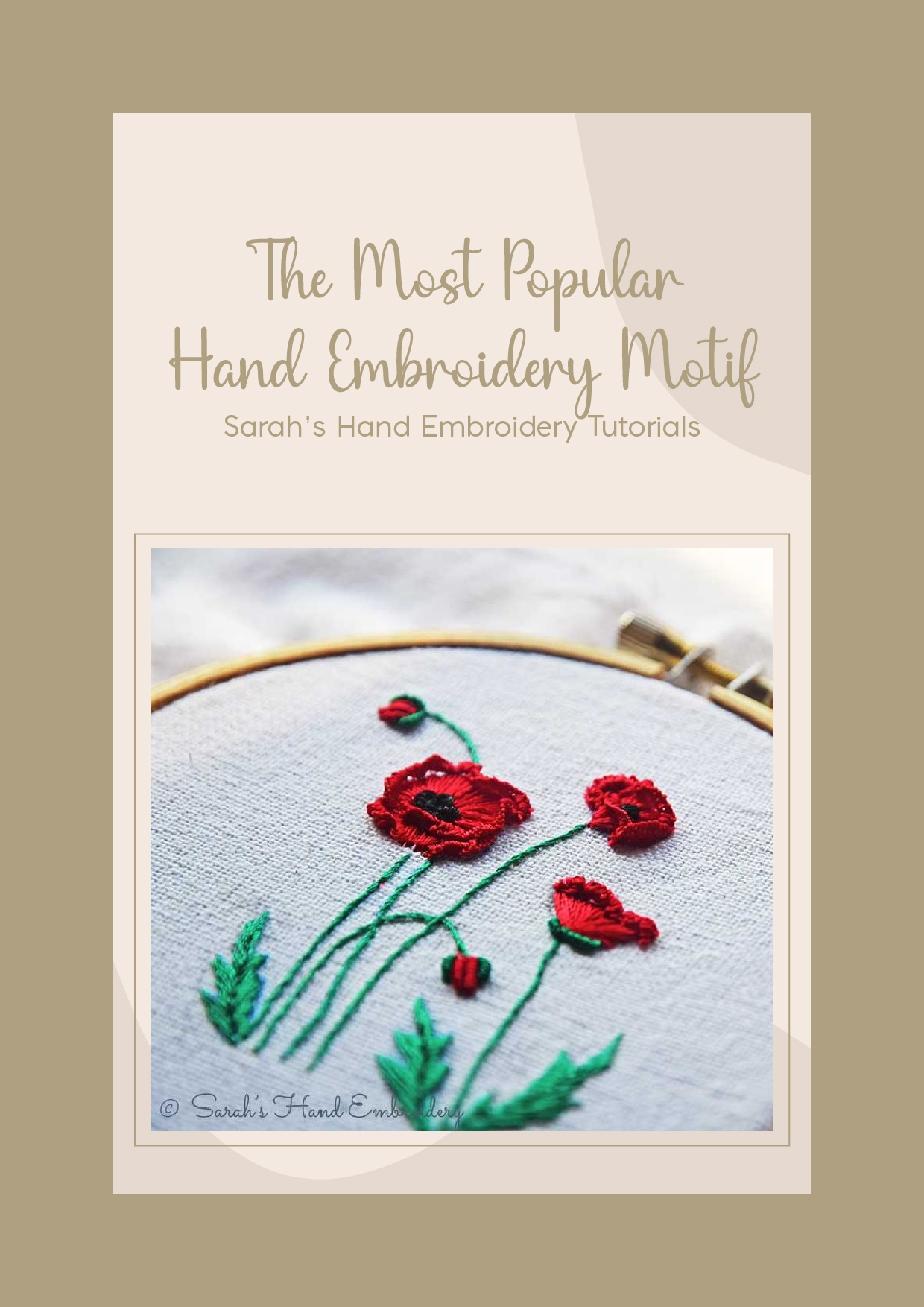
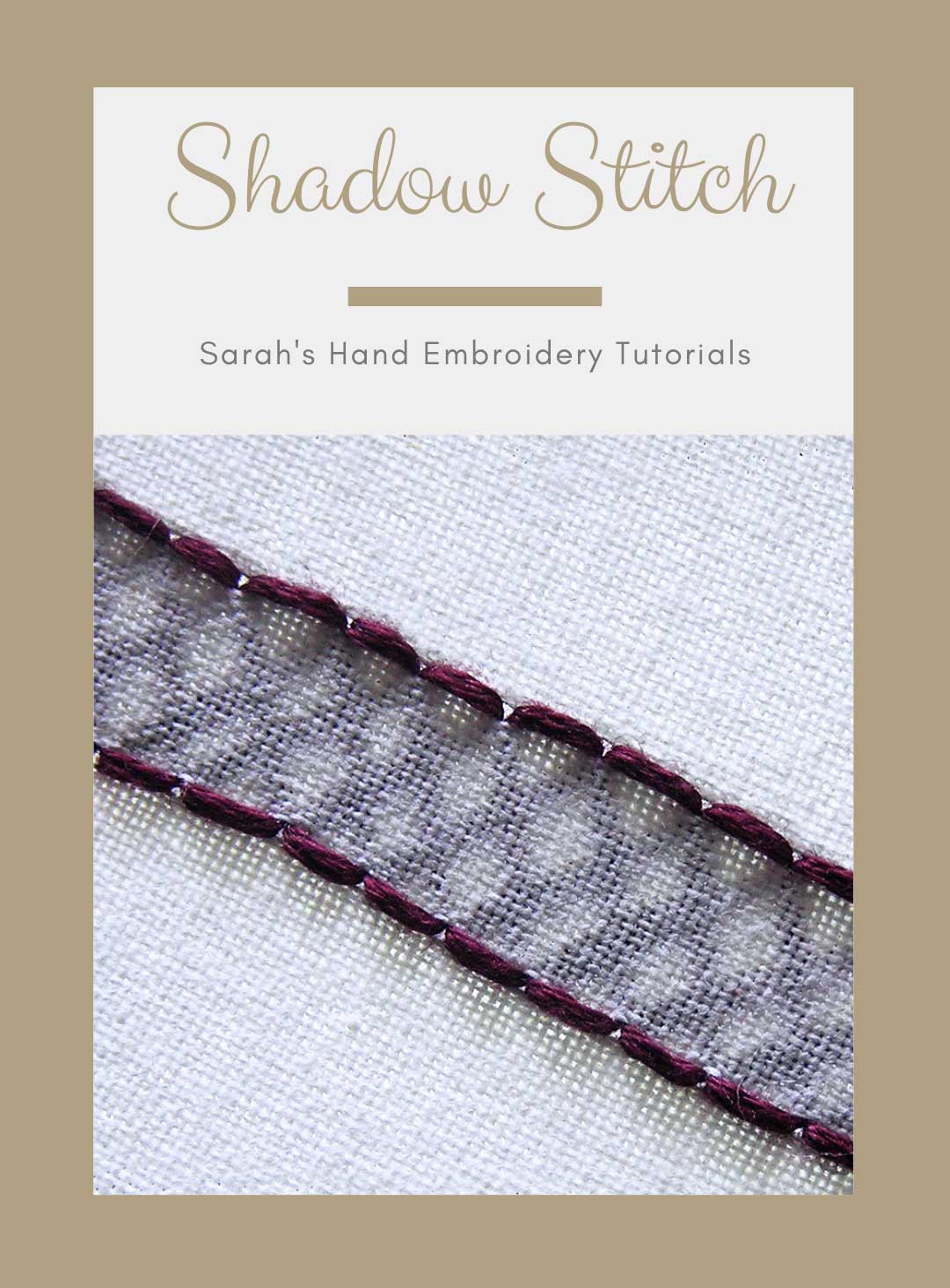


This stitch is very awesome. I have never seen one like it. I am very glad you have this on the web site for us to see and watch how you so it.
Thank you, Judy. 🙂
Hi Sarah !! I really love and appreciate your page !! I’m just a beginner, I’m just learning types and styles of stitches, and how to use them. Your website has helped me quite much! Hope to explore it more and be able to learn much more from it ! Thanks !
Hi Akila,
Your work is beautiful. Well done. We learn how to deal with each stitch, thread and fabric when we practice more.
Silk thread is very thin, but then, that is the point. I have worked with two strands of silk. You might take more if you feel two strands don’t look thick enough. Silk threads are better used for satin stitches and similar filling stitches. Else, try to keep the stitches shorter to avoid sagging of the thread.
Brazilian stitch is a 3D kind of stitch which uses rayon threads. It uses a few stitches that helps in giving it that effect. Crewel embroidery is not 3D stitching and can use cotton of satin thread. This embroidery uses most of the basic stitches over a design.
Hope this helps.
thank u so much sarah, i think this information will b helpful for me
hi sarah
i love ur embroidery tutorials, and i learned so many new stitches from here
i have done a flowervase but in htt i hve used silk thread in the pot area, its too clumpsy, but i love silk threads
plz suggest me how many strands to use in silk threads
and one more question is there brazilian embroidery and crewel embroidery the same and wat type of threads used for both these embroideries
thank u in advance
akila
Hi sarah,
First of all hats of to you for taking the time and effort to put up such and elaborate and turorial based website on embroidery. I have seen a lot of tutorials on the internet, but none of them are as clear and precise as yours.
I am a novice and want to start learning embroidery. Can you tell me what kind of thread is best for beginners? Also do you know any online stores that might sell embroidery supplies?
And if you use cotton floss as threads, how many strands do you suggest to use? And which is the best fabric for beginners?
Sorry for so many questions.
Loved your website. In a way you inspired to start learning. Keep up the great work.
Is ur e-book out yet??
Hi Pooja,
It is nice to know of your interest in hand embroidery.
Use cotton fabric.
You can use perle cotton as a beginner. It is a non divisible cotton yarn used for embroidery. It comes in various thickness.
Else, I would suggest you start using cotton floss…it will help you in getting used to it. You can use 3 strands.
You should be getting needles, embroidery threads, and even embroidery hoops in any variety or fancy store in India.
Best wishes and enjoy!
I have been using your website for months to learn new stitches- Thank you! Here is a recently completed mandala where I used the eastern stitch:

Wow Jodi! What a beautiful piece of work! Thanks for sharing. 🙂
You have used so many stitches in such a nice way.
Thanks! Your tutorials have been a real inspiration. I also contributed using your donate button- I hope it got to you 🙂
Cheers,
Jodi
Hi Jodi
Thank you very much for your contribution. It really helps us in keeping the quality of this website. 🙂
Sarah
Sarah, I was wondering if you have advice on how many threads should be used for a certain stitch? I am starting with a cross stitch quilt block.
Should I use Two are Three Strands or does it matter?
Thank you for this wonderful site.
Dear Cathy,
Sorry for not being available to respond to you early.
Usually, I prefer using 2 strands of thread. At times, two would also work.
For cross stitch, I recommend 3 strands.
It would certainly give a richer appearance.
If you are using aida fabric, check how tightly woven it is. The tighter it is, the lesser strand you need. But, I assume 3 might work fine for you.
Hope this helped. 🙂
I am turning 65 in a few months. was looking for information on redwork. I did some when younger and memory fails me. lol I was injured and finally diagnosed with parkinsons tremors .I have deep brain stimulators to help me hold still. while not perfect they helped me get back to my arts, your site was an amazing place to visit. and gave me more than I needed. hope it all comesback to me.
I am starting with a pair of pillow cases for my 90 year old mother. and yes I am sewing them myself.. again thanks a million for being there. wish me luck larry
larry, you are an inspiration! we’ll keep adding content, in the best way you can use. cheers,,
roxy
Dear Larry,
It is awesome to hear how you are getting back to your interests. It is even better to know that we are a part of it! Thanks.
We hope you enjoy all our pages and wish you luck. If possible, please do send us a picture of your finished work. It will be great to see the gift to your mother. 🙂
Sarah
Hi. I am very relieved to find your website with so many stitches but still grouped which avoids a lot of confusion. My query is I want to learn the stitches from the basic and then proceed towards complex. So should I proceed according to the stitch families that appear in the same order of dropdown list or should I learn the basics of every family and then proceed to the complex ones?
Hi Surbhi,
I am glad for your interest.
The first thing a beginner do is to get control over the fabric and needle. So, it is good if you begin with the easier family. Each family might have easy and complex stitches, but the stitch families I have placed on top are the ones I want a beginner to start with. So, you can follow the order given in the drop down box. If you find any stitch difficult, you can proceed to the next one and visit the difficult ones later. Hope this helps. Let us know how you progress!
Best wishes and enjoy.
Hello, I was looking for embroidery lessons on Pinterest and found it your website, just what I was looking for, so many lessons!
Thank You
I’m retired in Chiang Mai, Thailand and I just purchased a jacket covered in these stitches. But other items, purses, bags have the same technique/ method but in different patterns – see look like snow flakes, or daisy manure just horizontal lines in perfect stitching ! mostly white on indigo. The lady I purchased the jacket said it was from the Yao tribe but i can’t find any references or i am asking the words for internet.
do you have any background on this tribal use of the ‘rice embroidery pattern’? Thanks in advance…
6threadsjaci on facebook
wow ,so many words this computer changed !!! sorry … “daisys, many just horizontal lines…”
Hi,
I do not have much idea about the Yao tribe embroidery. But, it looks like pattern darning to me. This type of embroidery is used by many tribes around the world. The fabric, patterns, threads, and colors used distinguishes them from each other. The stitches run in horizontal lines from one stretch of the fabric to the other, going in and out of the fabric at particular lengths, each time, adding to the overall pattern (in your case, the rice embroidery pattern). You can refer a small lesson in pattern darning here: https://www.embroidery.rocksea.org/hand-embroidery/pattern-darning/
Hope this helps! 🙂
I’m new to this beautiful art I’m anxious to explore your website
Thank you WISH ME LUCK,
Estou encantada com o seu site…muito obrigada aprendi a fazer muitos pontos….quando tiver um pronto envio. bjs.
Amazing !
How fun! It looks like a little dog to me:)